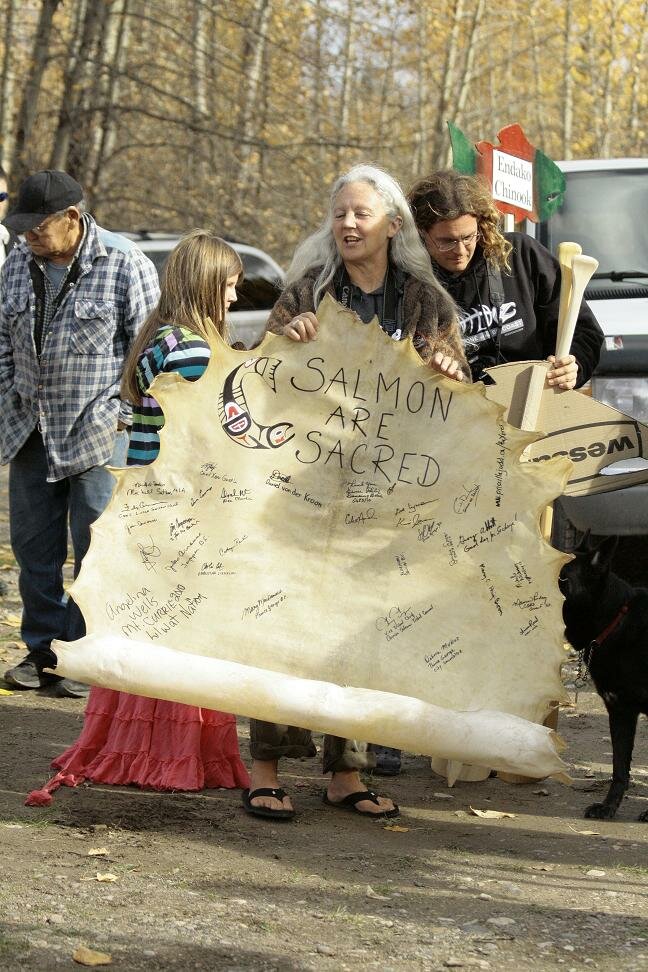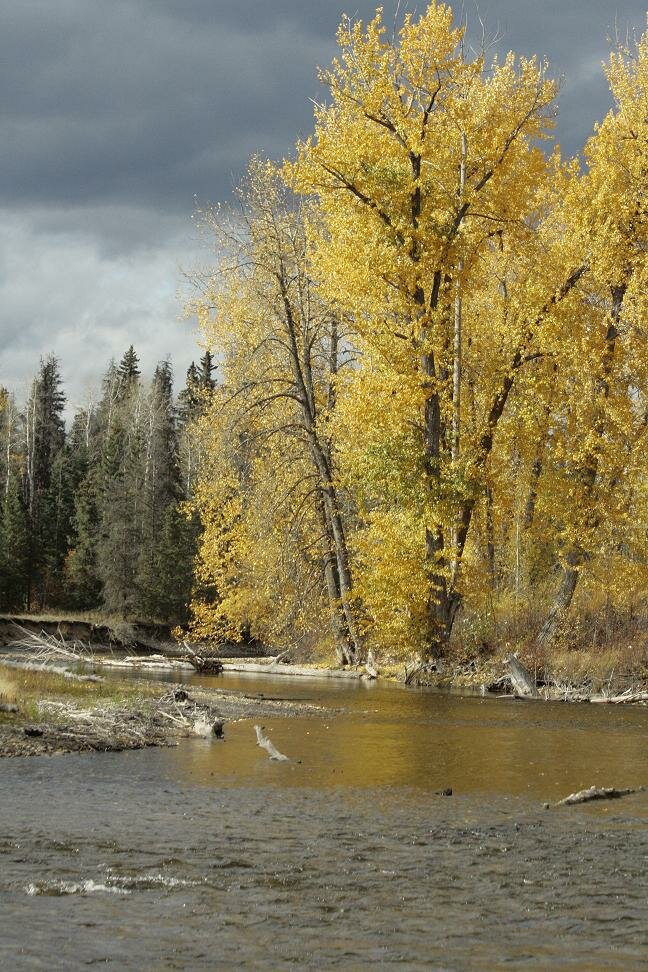What other sort of ridiculous suggestions does the Province of BC have?
Yesterday’s Globe and Mail article by Mark Hume:
The Cohen Commission of Inquiry into the Decline of Sockeye Salmon in the Fraser River was urged by federal and provincial government lawyers Tuesday not to wade too deeply into the complex and controversial issue of native fishing rights.
But British Columbia Supreme Court Justice Bruce Cohen, who is heading the judicial inquiry ordered last year by Prime Minister Stephen Harper, was also told by aboriginal groups that he can’t ignore the topic, even though an examination of native rights falls outside his mandate.
On the second paragraph, I take issue with Hume’s assertion that the ‘examination of native rights falls outside of Cohen’s mandate’. And certainly take issue with the suggestions of the Province of BC reps.
The ‘terms of reference’ for the Commission state, for example:
B. to consider the policies and practices of the Department of Fisheries and Oceans (the “Department”) with respect to the sockeye salmon fishery in the Fraser River – including the Department’s scientific advice, its fisheries policies and programs, its risk management strategies, its allocation of Departmental resources and its fisheries management practices and procedures, including monitoring, counting of stocks, forecasting and enforcement…
At every juncture of this term of reference — lies aboriginal fishing rights, not to mention aboriginal rights and title. Basically, through every aspect of the Commission’s work as well as how DFO manages salmon fisheries lie the rights of First Nation people through Section 35 of the Canadian Constitution for example.
35. (1) The existing aboriginal and treaty rights of the aboriginal peoples of Canada are hereby recognized and affirmed.
Aboriginal rights refer to the activities, practice, and traditions of the aboriginal peoples in Canada that are integral to the distinctive culture of aboriginal peoples.
I am certainly not a lawyer, however, last time I checked… wild salmon were rather “integral to the distinctive culture of aboriginal peoples” throughout British Columbia and especially throughout the Fraser River, and most especially in relation to Fraser sockeye.
_ _ _ _ _ _
Let’s look a little more specifically at term “B” of Cohen’s terms of reference — for example, “consider the policies and practices of the Department of Fisheries and Oceans with respect to the sockeye salmon fishery in the Fraser River“…
uh, ok… well at the simplest level, the salmon fishery on the Fraser River is guided by: (1) conservation, then (2) First Nation food, social and ceremonial fisheries, then (3) commercial and sport fisheries. Add in things like the Aboriginal Fisheries Strategy, which largely flowed out of court cases surrounding aboriginal fishing rights, the Pacific Integrated Commercial Fisheries Initiative (PICFI) which is looking at various ‘opportunities’ (aka, bureaucratic bafflegab and bumpf), and so on and so on.
Then add in further complexities such as the recent Ahousaht decision which suggests there is an economic component that must be considered over and above food, social and ceremonial (FSC). For some reason, some folks (esp. federal ministry folks) think that FSC fisheries are some sort of static thing that don’t shift and meld with time. For example, didn’t Statistics Canada find recently that aboriginal people are, by far, the fastest growing segment of the Canadian population?
_ _ _ _ _
Cohen’s term of reference “B”: “…including the Department’s scientific advice…”
Hmmm… ummm… wait doesn’t Canada’s Wild Salmon Policy state:
Principle 3 Sustainable Use.
Resource management decisions will consider biological, social, and economic consequences, reflect best science including Aboriginal Traditional Knowledge (ATK), and maintain the potential for future generations to meet their needs and aspirations.
… reflect best science including aboriginal traditional knowledge… hmmm.
How many initiatives does DFO have right now that are actively and successfully incorporating ATK? I think the answer starts with “z” and ends with “o”…
_ _ _ _ _ _
“…its fisheries policies and programs…”
Oh right… there’s the . And let me quote from DFO’s website:
In 1990, the Supreme Court of Canada issued a landmark ruling in the Sparrow decision. This decision found that the Musqueam First Nation has an Aboriginal right to fish for food, social and ceremonial purposes. The Supreme Court found that where an Aboriginal group has a right to fish for food, social and ceremonial purposes, it takes priority, after conservation, over other uses of the resource. The Supreme Court also indicated the importance of consulting with Aboriginal groups when their fishing rights might be affected.
In response to this decision, and to provide stable fishery management, Fisheries and Oceans Canada (DFO) launched the Aboriginal Fisheries Strategy (AFS) in 1992. The AFS is applicable where DFO manages the fishery and where land claims settlements have not already put a fisheries management regime in place.
Ohhh… so the AFS is applicable where DFO manages the fishery and where land claim settlements (i.e. Treaties) have not be completed?
Gee… last time I checked that’s basically the entire Fraser River watershed with the exception of Tsawwassen.
Oh, and DFO’s fisheries policies and programs are largely guided by case law and court decisions — and many of those policies and programs are most likely to come under more court challenges and case law?
_ _ _ _ _
“…its risk management strategies…”
Ummm… the large avoidance of dealing meaningfully with the significant outstanding issues — like a B.C. Treaty Process that is so flawed and failing… Thus, what does the Department do in the meantime in regards to aboriginal rights and title and fishing rights… it’s called risk management.
How much can we get away with without more First Nations taking us to court.
_ _ _ _ _ _
“…its allocation of Departmental resources and its fisheries management practices and procedures…”
Well… for this 10,000 full time equivalents strong Ministry, and the 100 or so people listed on Salmon Management Plans — maybe the allocation is not so efficient. Add in the Aboriginal Fisheries Strategy and PICFI and there is over $50 million being allocated to various First Nation organizations for a variety of purposes — with significant inequalities in which organizations receive funding and how much.
Fisheries management practices and procedures? We’ve been there, aboriginal rights and title are vital in this analysis.
_ _ _ _ _ _
“…including monitoring, counting of stocks, forecasting and enforcement…”
AFS funding is basically only handed out for First Nations to count fish.
Forecasting? One would hope that aboriginal traditional knowledge (ATK) would be a key component of this. How much is involved?
zero.
_ _ _ _ _ _
From the Globe article:
“This commission has no mandate to inquire into aboriginal rights . . .[and it is] not advisable for you as a commission to make any rulings [on the issue],” said Boris Tyzuk, speaking for the provincial government.
Well Province, and Mr. Tyzuk… I suppose this demonstrates the Province’s knowledge of aboriginal rights surrounding Fraser salmon (and other related issues surrounding aboriginal rights and title).
Mr. Tyzuk said he has been involved in negotiations on several treaties in B.C. and the fishing components of those treaties “were always the toughest” things to resolve.
Gee, do you think… it’s only 150 years of oppressive history.
And yeah… maybe you folks are right… let’s just avoid those “complex and controversial issues”…
Give me a freaking break… the entire issue is complex and controversial. That’s why the timelines from the beginning were absurd, and why the previous 5 inquiries on the same issue have produced little change…


















